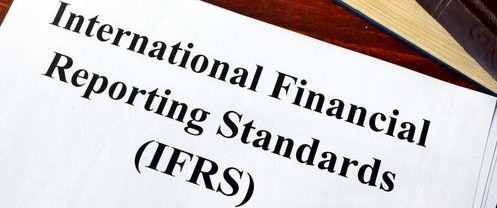When analyzing your loyalty program strategy, knowing the financial benchmarks against which you should be comparing the success of your program is vital.
Unfortunately, such competitive information is not readily available without extensive research or an expensive team of consultants.
In an effort to uncover valuable loyalty program insight for our readers, we’ve taken it upon ourselves to assess the competitive landscape of some of today’s largest loyalty programs. Our goal: establish key loyalty program benchmarks across industries where loyalty programs play an indisputable role in generating significant revenue — namely, hospitality, frequent flyer programs and finance.
As part of our research, we've selected several leading companies within each industry, carefully examining the following:
We start this series by taking an inside look at the hospitality industry – arguably one of the largest sectors of the loyalty program industry. Companies examined include:
We hope these insights prove valuable in guiding you towards better decision making for your loyalty program.

Loyalty programs are a tactic for increasing customer engagement, ultimately generating additional sources of revenue and profitability for a company.
However, establishing and managing these programs also generates new costs. The costs associated with future redemptions make up the loyalty program liability.
Actuarial analysis can forecast your expected liabilities, redemption patterns, and ultimate breakage. This is key to prevent having too much revenue locked up in deferred revenue or liabilities.
Within the hospitality industry, loyalty program liabilities are typically recognized as a current or noncurrent liability. All in, these accounts represent the fair value of anticipated redemptions associated with loyalty program points issued to date.
Total revenue vs. loyalty program deferred revenue liabilities, 2017
| Company | Total Revenue | Loyalty Program Liability (Deferred Revenue)* |
| Marriott | $22,894 million | $4,940 million |
| Hilton | $9,140 million | $1,461 million |
| Hyatt | $4,685 million | $561 million |
| IHG | $1,784 million | $1,066 million |
| Wyndham | $1,347 million | $90 million |
| Choice | $1,007 million | $128 million |
| Best Western | $380 million | $119 million |
*Restated to reflect ASC 606/IFRS 15 where necessary
These deferred revenue liabilities represent the potential performance obligations that may need to be satisfied in the future. While on a cash basis, the company may have already collected on these obligations, to properly account for loyalty program revenue, revenue is not recognized until these obligations are performed (i.e., the points are redeemed).
Generally, the larger the hospitality company, the larger their program liability. There are a few noteworthy exceptions in IHG and Best Western, where we see lower total revenue (comparatively speaking) with a significant percentage tied up in program liability.
These liabilities represent a massive investment in members and, therefore, a huge opportunity to drive value for the organization. At this scale, even a small 1% improvement in the ROI on these liabilities could drive tens of millions of dollars of value creation. For example, with Marriott’s $4.9 billion liability, a 1% improvement in the ROI would drive $49 million of value creation.
Of further interest is the split between current and non-current liabilities.
Current vs non-current liabilities for loyalty programs 2017
| Company | Current liability | Non-current liability |
| Marriott | 42% | 58% |
| Hilton | 43% | 57% |
| Hyatt | 36% | 64% |
| IHG | 45% | 55% |
| Wyndham | 59% | 41% |
| Choice | 62% | 38% |
| Best Western | 33% | 67% |
| Average | 46% | 54% |
On average, a significant piece of these performance obligations is expected to be redeemed after 12 months (the general definition of current vs. non-current liability). Therefore, accurate breakage and ultimate redemption rate forecasting is essential, otherwise current obligations may be underserved.
The table above is ordered from largest to smallest based on revenue, and the loyalty programs of larger companies tend to have a higher proportion of non-current liabilities. This suggests as a program grows, redemption behavior is drawn out over a longer time period.
Incorporating an expiration rule into your loyalty program can incentivize members to maintain a regular cadence of activity in your program
The introduction of a new expiration rule many increase the uncertainty of liability and breakage estimates. However, as program expiration rules mature, member behavior can potentially be better predicted.
Point expiration varies by industry. It is common for credit card and frequent flyer points to be issued without an expiration rule. The hospitality industry, on the other hand, almost universally incentivizes more frequent usage.
Expiration policies by hotel, 2017
| Company | Required activity period |
| Marriott | 24 months |
| Hilton | 12 months |
| Hyatt | 24 months |
| IHG | 12 months |
| Wyndham | 18 months* |
| Choice | 18 months |
| AccorHotels | 12 months |
| Best Western | None |
*In addition to the activity-based expiration rule, Wyndham points expire 4 years after issuance
Hospitality expiration policies are generally based on activity, rather than the period of time since the points were originally earned. They typically require a minimum base activity in order to maintain points and eligibility. This can be as little as using 1 point every 12 months.
Hospitality program expiration rules are generally straightforward, with few caveats. They simply encourage regular participation, while not overly penalizing low activity.
Taking a look at the table above, about half of all programs cap their expiration rule at 12 months, with the other half expiring after 18 to 24 months.
We recently saw the impact of adding an expiration policy when IHG implemented a 12-month expiration policy back in April 2015. Upon recommendation from an external actuary, the implementation resulted in the releasing of $156 million from IHG’s loyalty program liability.
Ultimately, the decision on the ideal expiration policy for your program should be based on customer lifetime value (CLV); having a lax expiration policy can be well worth the investment if it results in better engagement and a net increase in CLV.

Strong loyalty program membership can be analogous to brand clout. But it’s not necessarily indicative of a highly functioning program.
Loyalty program members vs total revenue as of 2017
| Company | Members | Total 2017 Revenue |
| Marriott | 110 million | $22,894 million |
| Hilton | 71 million | $9,140 million |
| Hyatt | 10 million | $4,685 million |
| AccorHotels | 41 million | $2,099 million |
| IHG | 100 million + | $1,784 million |
| Wyndham | 68 million | $1,347 million |
| Choice | 35 million | $1,007 million |
| Best Western | 33 million | $380 million |
It’s no surprise that loyalty program membership correlates with total revenue. Larger hospitality companies command greater market share; they simply have a larger pool from which to recruit loyalty program members.
Take a closer look at the numbers, however, and you’ll notice that not every chain is capitalizing on the opportunity. With only 10 million members, Hyatt appears to be underutilizing its loyalty program, when stacked against its peers. Increasing program participation appears to be an opportunity to drive revenue growth.
Contrarily, Best Western appears to have a very active program. Total membership exceeds or equals that of its larger peers. This may be indicative of high member engagement, or perhaps, easy program enrollment.
You’ve heard it again and again: loyalty programs drive customer engagement, leading to increased revenue and more profitable growth.
Our analysis confirms this.
Loyalty program member contribution, 2017
| Company | Loyalty member contribution |
| Hilton | 57% of room nights |
| Marriott | 50% of room nights |
| IHG | 43% of room revenue |
| Wyndham | ~33% of room nights |
| Hyatt | 30% of room nights |
| Best Western | 44% of room revenue |
The companies in this table are listed by 2017 revenue, from high to low. Arranged this way, we start to see a trend: loyalty program utilization appears to correlate with higher company revenue.
This supports the hypothesis that loyalty programs can be a major source of untapped revenue for a hospitality company. Hotels like Hyatt and Wyndham may be able to drive stronger sales growth by improving their loyalty programs.
As a result, opportunity can be uncovered in the analysis of multi-year sales growth and member loyalty program utilization. The analysis could confirm a multi-year trend and provide direct evidence for the top and bottom-line improvements generated by loyalty programs.

ASC 606 was made effective for public entities in December 2017, resulting in significant changes for loyalty programs. Its counterpart, IFRS 15, drove changes internationally.
Compliance is now required for all public entities.
The ASC 606 / IFRS 15 implementation drove several key changes:
Before the implementation of these new standards, companies employed two primary methodologies of loyalty program accounting: the incremental cost model and the deferred revenue (i.e., “multiple-element”) model.
With the change, all companies are now required to report liability using the deferred revenue model, and separate the initial transaction from the subsequent transactions, as loyalty points are redeemed.
Many of the US GAAP companies examined in this analysis had already been following a deferred revenue model, and therefore had little to no change in reporting. But in a few cases, companies saw an increase in deferred revenue accounts.
Best Western, a privately held company, has until December 2018 to adjust to the new accounting provisions. The company currently follows an incremental cost model, which will be rendered invalid by ASC 606. As is, Best Western has not shared plans for the transition to the new accounting standards.
The updates required by IFRS 15 were less significant than those required by GAAP. However, this required adjustments with two of the examined hospitality companies.
Prior to IFRS 15, IHG accrued revenue as soon as customers earned points, and a liability was established to cover the cost of redemptions (the reimbursement IHG would pay to the hotel owners). After IFRS 15, they now defer revenue until points are redeemed, based on the standalone selling price of the value of those points to the member. The result has been a net increase in IHG’s program liabilities.
Similarly, AccorHotels now views its performance obligation to be unsatisfied until points are redeemed or expire. As a result, revenue associated with their loyalty program is deferred in an amount that reflects the standalone selling price of the future benefit to the member. The accounting change has driven an increase in deferred revenue and, similar to IHG, a net increase in AccorHotels’ liabilities.
The increase may be the result of the new fair value requirement. Previously, loyalty programs may have deferred revenue at fair value to the hotel owner. With IFRS 15, hotels must now defer revenue at fair value to the customer.
For example, let’s say the fair value to a customer of a free night’s stay at a hotel is $100. The hospitality company has agreed to reimburse the hotel owner $70 for a free night (often, the hotel is not fully booked, so this room likely wouldn't have rented anyways). Before IFRS 15, the hospitality company would have a liability for the $70 they would owe the hotel owner upon redemption. Now, however, they must defer $100, and can only recognize the remaining $30 when the free night is redeemed.
Among loyalty programs, a major point of contention is breakage. Breakage refers to the loyalty rewards points that go unredeemed, and therefore become booked as revenue without a corresponding expense.
A company that estimates too much breakage will not defer enough revenue, while a company that forecasts too little breakage will defer too much revenue.
Should an overestimate in breakage occur, the resulting revised financial statements could show a material hit to retained earnings. Conversely, deferring too much revenue will result in “stuck revenue,” and tie up valuable funds. To avoid these reporting adjustments, it’s well worth investing in accurate breakage forecasting.
While disclosing breakage isn’t a reporting requirement, it’s an essential component of calculating reliable loyalty program liability.
You won’t find companies sharing their breakage estimates, but many do report breakage sensitivities. You can gather some directional evidence and benchmarking from how breakage estimates impact the the balance sheet:
| Company | Sensitivity | Total Loyalty Program Liability |
| Marriott | 10% decrease in breakage increases liability by $269 million | $4,940 million |
| IHG | 1% decrease in breakage increases liability by $10 million | $760 million |
| Hyatt | 10% decrease in breakage increases liability by $30 million | $561 million |
Generally speaking, a 10% decrease in breakage estimates can drive a 5-15% change in program liability.
The consequences of having to make a 10% adjustment in breakage could transform a company’s balance sheet. Solvency ratios, liquidity requirements, deferred revenue forecasts, and expense estimates may all be affected.
Make sure you have a robust framework for estimating breakage.

Customer loyalty programs are not new. Still, as you explore the world of numerical analysis, you’ll find that limited benchmarking data is available.
The hospitality industry is no exception.
Our 2017 analysis included top companies. Future analysis may expand beyond this list.
Compare yourself to the competition (with a grain of salt). While the exact magnitude may vary, the basic rules and trends remain. And start by asking the right questions:
What is our ideal breakage rate?
Does our program liability make sense?
Does our program expiration rule help or hurt us?
How does our loyalty program membership compare to that of our competition?
Do our loyalty members drive top and bottom line growth?
Is our loyalty program accounting accurate?
Are we conducting sensitivity analysis on our breakage rates?
If you don’t have the answer to all these questions, that’s okay. Knowing which questions to ask, along with the right benchmarks, is the first step.
Founder and managing partner of KYROS Insights. I'm an analytics nerd and recovering actuary. I use machine learning to help loyalty programs predict member behavior so they can identify their future best customers, and recognize and reward them today.
Comments